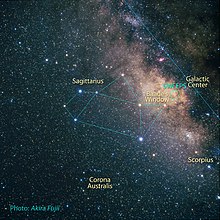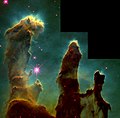Planets discovered
Sixteen candidate planets were discovered with orbital periods ranging from 0.6 to 4.2 days. Planets with orbital periods less than 1.2 days have not previously been detected, and have been dubbed "ultra-short period planets" (USPPs) by the search team. USPPs were discovered only around low-mass stars, suggesting that larger stars destroyed any planets orbiting so closely or that planets were unable to migrate as far inward around larger stars. [4]
Planets were found with roughly the same frequency of occurrence as in the local neighborhood of Earth. [2]
SWEEPS-4 and SWEEPS-11 orbited stars that were sufficiently visually distinct from their neighbors that follow-up observations using the radial velocity method were possible, allowing their masses to be determined. [2]
This table is constructed from information obtained from the Extrasolar Planets Encyclopedia and SIMBAD databases that reference the Nature article as their source. [4]
This page is based on this
Wikipedia article Text is available under the
CC BY-SA 4.0 license; additional terms may apply.
Images, videos and audio are available under their respective licenses.






